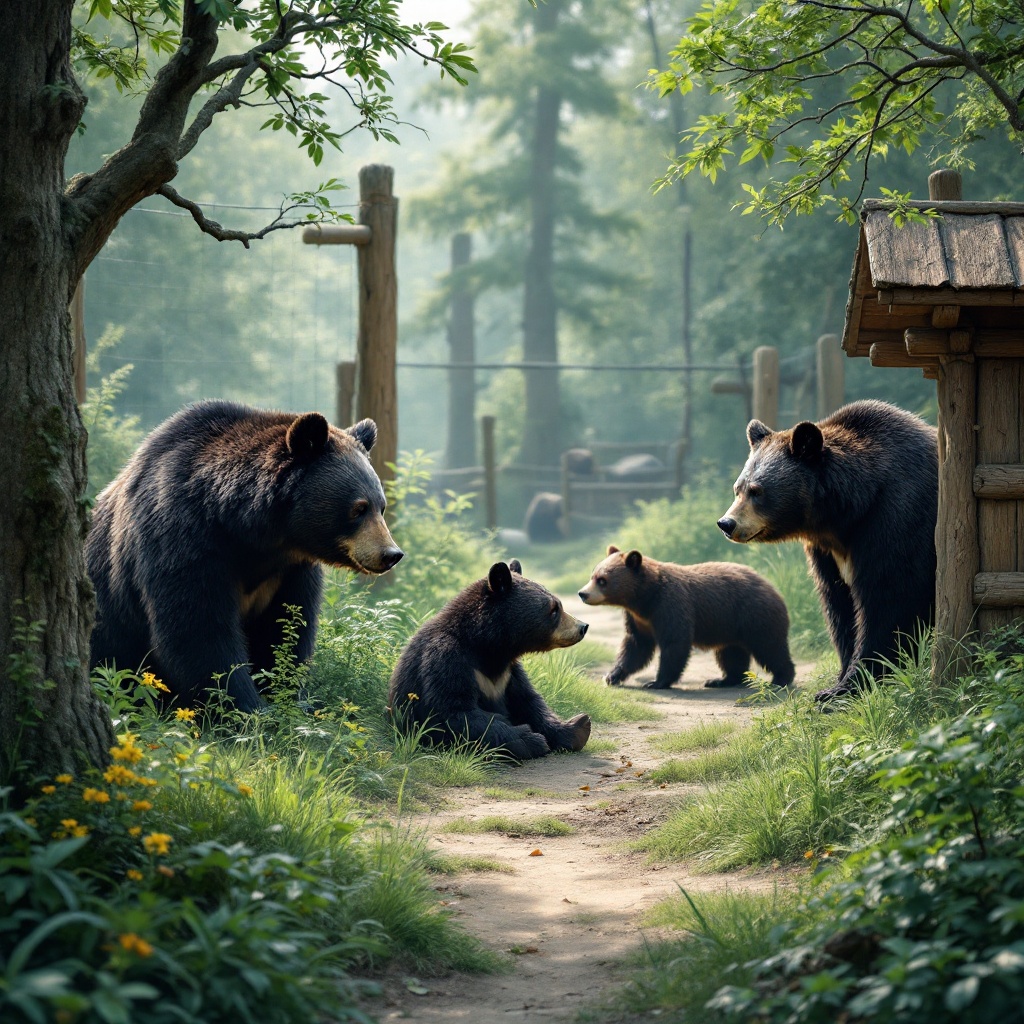The Importance of Bear Sanctuaries: A Home for the World’s Bears
Bears are among the most fascinating and charismatic animals on our planet. With their diverse species and unique characteristics, they play crucial roles in their ecosystems. Unfortunately, many bear species face threats from habitat loss, poaching, and illegal wildlife trade. This is where bear sanctuaries come into play, providing a safe haven for these magnificent creatures. In this article, we will explore various bear species, the significance of bear sanctuaries, and how organizations like Animals Asia are making a difference.
Understanding Bear Species
There are eight bear species that inhabit different regions of the world, each adapted to their unique environments. Let’s take a closer look at these remarkable animals:
American Black Bear
The American Black Bear (Ursus americanus) is the most widely distributed bear species in North America. These bears are known for their adaptability and can thrive in various habitats, including forests, swamps, and even urban areas. They are omnivorous and primarily feed on fruits, nuts, insects, and small mammals. Unfortunately, habitat destruction and hunting have led to declining populations in some areas.
Asian Black Bear
The Asian Black Bear, also known as the Moon Bear (Ursus thibetanus), is native to Asia and is identifiable by the white crescent-shaped marking on its chest. These bears inhabit forests and mountainous regions, primarily in countries like India, China, and Japan. They face significant threats from poaching for their bile, which is used in traditional medicine.
Brown Bear
Brown Bears (Ursus arctos) are one of the largest bear species and can be found across North America, Europe, and Asia. They are known for their impressive size, strength, and intelligence. Brown bears play vital roles in their ecosystems by helping to control prey populations and disperse seeds. However, they are also threatened by habitat loss and hunting.
Giant Panda
The Giant Panda (Ailuropoda melanoleuca) is perhaps the most beloved bear species, famous for its distinctive black and white fur. Native to China, pandas primarily feed on bamboo and are considered a symbol of wildlife conservation efforts. With habitat destruction and a low reproductive rate, they remain classified as vulnerable.
Polar Bear
Polar Bears (Ursus maritimus) are uniquely adapted to life in the Arctic, with their thick fur and layers of fat providing insulation against the cold. They are excellent swimmers and rely on sea ice for hunting seals, their primary food source. Climate change poses a significant threat to polar bears, as melting ice limits their hunting grounds.
Sloth Bear
The Sloth Bear (Melursus ursinus) is native to the Indian subcontinent and is known for its shaggy fur and long snout. These bears are specialized feeders, primarily consuming insects, fruit, and honey. Their populations are declining due to habitat loss and human-wildlife conflict.
Spectacled Bear
The Spectacled Bear (Tremarctos ornatus) is the only bear species native to South America. They are named for the unique markings around their eyes that resemble glasses. Spectacled bears primarily inhabit cloud forests and are crucial for seed dispersal in their ecosystems. However, they are threatened by habitat destruction and poaching.
Sun Bear
The Sun Bear (Helarctos malayanus) is the smallest bear species and is found in the tropical forests of Southeast Asia. They are known for their short, sleek fur and long tongues, which they use to extract honey and insects from trees. The Sun Bear faces threats from habitat loss and hunting.
What is a Bear Sanctuary?
A bear sanctuary is a safe haven where rescued bears can live in a natural environment, free from the threats they faced in the wild or captivity. These sanctuaries provide essential care, rehabilitation, and a permanent home for bears that have been rescued from abusive situations, such as bile farms, illegal wildlife trade, or cruel entertainment practices.
The Role of Bear Sanctuaries
Bear sanctuaries play a significant role in wildlife conservation and education. They not only provide a safe environment for bears but also raise awareness about the challenges these animals face:
Rescue and Rehabilitation
Sanctuaries rescue bears from situations of cruelty and exploitation. Many bears arrive with physical and psychological scars, requiring specialized care and rehabilitation. Dedicated staff work tirelessly to ensure each bear receives the medical attention, nutrition, and emotional support they need to recover.
Education and Awareness
Bear sanctuaries often serve as educational centers, helping visitors understand the importance of bear conservation. Through guided tours, workshops, and outreach programs, sanctuaries raise awareness about the threats bears face and promote responsible wildlife practices.
Research and Conservation Efforts
Many bear sanctuaries engage in research to better understand bear behavior, health, and welfare. This research contributes to the broader field of wildlife conservation and informs best practices for bear care and rehabilitation.
Animals Asia: A Leader in Bear Sanctuary Care
One of the most renowned organizations dedicated to bear welfare is Animals Asia. Founded in 1998, Animals Asia has been at the forefront of bear rescue and rehabilitation efforts, particularly in Asia.
Rescue Operations
Animals Asia has successfully rescued hundreds of bears from bile farms in Vietnam and China. These bears are often kept in deplorable conditions, enduring extreme suffering for the sake of traditional medicine. Animals Asia works closely with local authorities to shut down these farms and rescue the bears.
Bear Sanctuary in Vietnam
The Animals Asia Bear Sanctuary in Vietnam is a state-of-the-art facility where rescued bears can live in a natural environment. The sanctuary provides spacious enclosures filled with trees, pools, and enrichment activities to ensure the bears thrive. The team at Animals Asia works diligently to rehabilitate each bear, allowing them to live out their lives in peace.
Advocacy and Education
In addition to rescue operations, Animals Asia advocates for bear welfare and wildlife protection. The organization engages in educational campaigns to raise awareness about the plight of bears and promotes sustainable practices among local communities.
How You Can Help
Supporting bear sanctuaries and wildlife conservation organizations is essential for the future of bears. Here are some ways you can help:
Adopt a Bear
Many bear sanctuaries, including Animals Asia, offer adoption programs. By adopting a bear, you contribute to their care and wellbeing, providing them with food, shelter, and medical attention.
Spread Awareness
Share information about bear sanctuaries and the challenges bears face with your friends and family. Social media is a powerful tool for raising awareness and advocating for wildlife protection.
Volunteer or Donate
If you have the opportunity, consider volunteering at a bear sanctuary or donating to organizations that support bear welfare. Your time and resources can make a significant difference in the lives of these animals.
Conclusion
Bears are magnificent creatures that deserve our respect and protection. Bear sanctuaries play a vital role in providing a safe haven for these animals, promoting awareness, and advocating for their conservation. Organizations like Animals Asia lead the charge in rescuing and rehabilitating bears, ensuring they can live out their lives in peace. By supporting bear sanctuaries, we can all contribute to the well-being of these incredible animals and help secure a future where they thrive in the wild.


